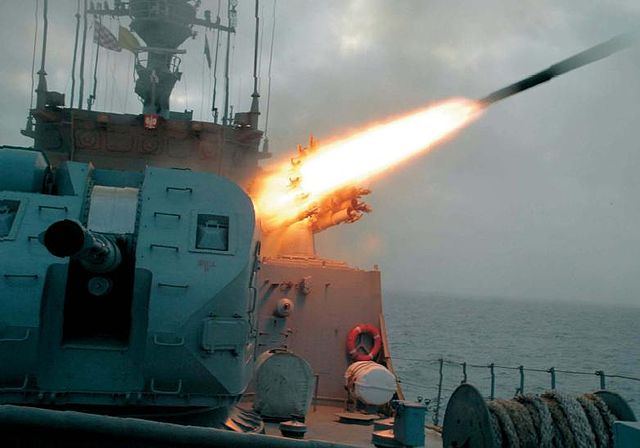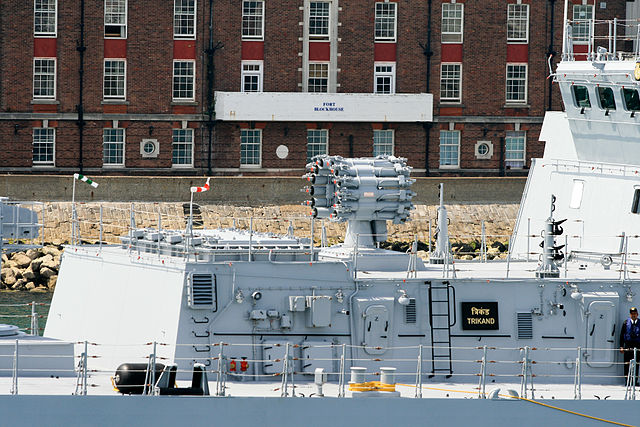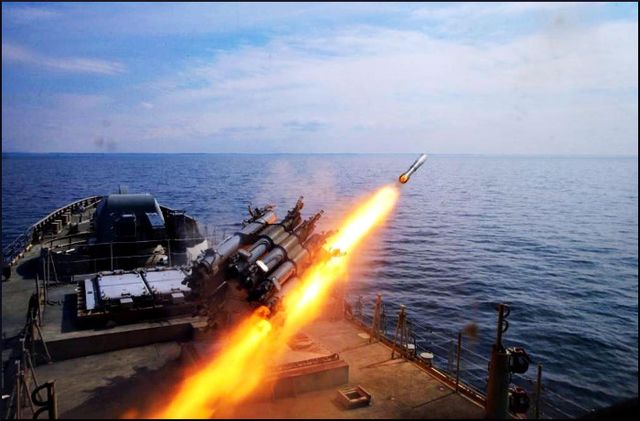Loading AI tools
Soviet anti-submarine rocket launcher From Wikipedia, the free encyclopedia
The RBU-6000 Smerch-2 (Реактивно-Бомбовая Установка, Reaktivno-Bombovaja Ustanovka; rocket-bomb installation & Смерч; waterspout) is a 213 mm caliber Soviet anti-submarine rocket launcher. The system entered service in 1960–1961 and is fitted to a wide range of Russian surface vessels. It consists of a horseshoe-shaped arrangement of twelve launch barrels, that are remotely directed by the Burya fire control system (that can also control the shorter ranged RBU-1000). It fires RGB-60 rockets, which carry unguided depth charges. The rockets are normally fired in salvos of 1, 2, 4, 8 or 12 rounds. Reloading is automatic, with individual rounds being fed into the launcher by the 60UP loading system from a below deck magazine. Typical magazine capacity is either 72 or 96 rounds per launcher. It can also be used for shore bombardment.





The RPK-8 system is an upgrade of the RBU-6000 system, firing the 90R rocket, which releases a 90SG depth charge that is actively guided in the water.[1] This allows it to home in on targets at depths of up to 1,000 metres (3,300 ft). The warhead is a 19.5-kilogram (43 lb) shaped charge, which enables it to punch through the hulls of submarines. It can also be used against divers and torpedoes. System response time is reported to be 15 seconds and a single-salvo has a kill probability of 0.8. RPK-8 entered service in 1991 and mounted on Project 1154 and 11356 frigates. Serial production of the upgraded 90R1 rocket was launched in 2017.
RBU-6000 were the most widespread anti-submarine rocket launchers in the Soviet Navy, used on many ship classes.
All rockets are 212 mm in diameter.[1]
| Value | RGB-60[2] | 90R[1] |
|---|---|---|
| Weight (kg) | 113.5 | 112.5 |
| Warhead | 23 kg, explosive | 19.5 kg, shaped |
| Range (m) |
|
600 m to 4,300 m |
| Target depth (m) | 10 to 500 m |
|
| Sink rate | 11.6 m/s | Unknown |
| Seek radius | N/A (not homing) | 130 m |
Both versions of depth charges have contact and programmed fuse modes.[2] The guided depth charge released by 90R has its own name, 90SG.[1]
India's DRDO developed Extended Range Anti-Submarine Rocket (ERASR) to enhance the range of existing RGB-60 rocket. ERASR has twin motor propulsion system which can fire the rocket in short range and long range mode to achieve a distance of 500 m to 8900 m. The rocket was successfully test fired from INS Chennai on 3 April 2023.[3][4]
Ship classes fitted with RBU-6000 (list not complete)
Seamless Wikipedia browsing. On steroids.
Every time you click a link to Wikipedia, Wiktionary or Wikiquote in your browser's search results, it will show the modern Wikiwand interface.
Wikiwand extension is a five stars, simple, with minimum permission required to keep your browsing private, safe and transparent.